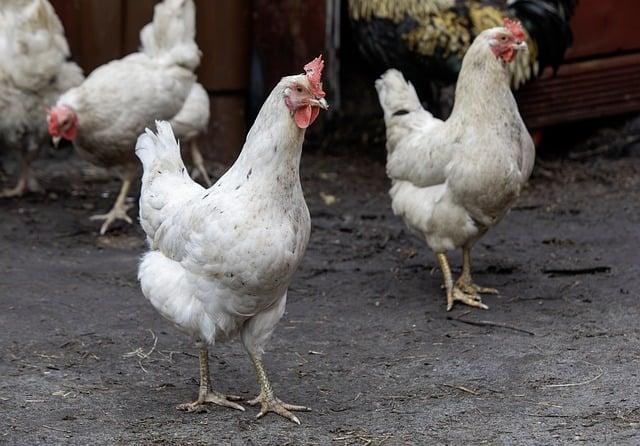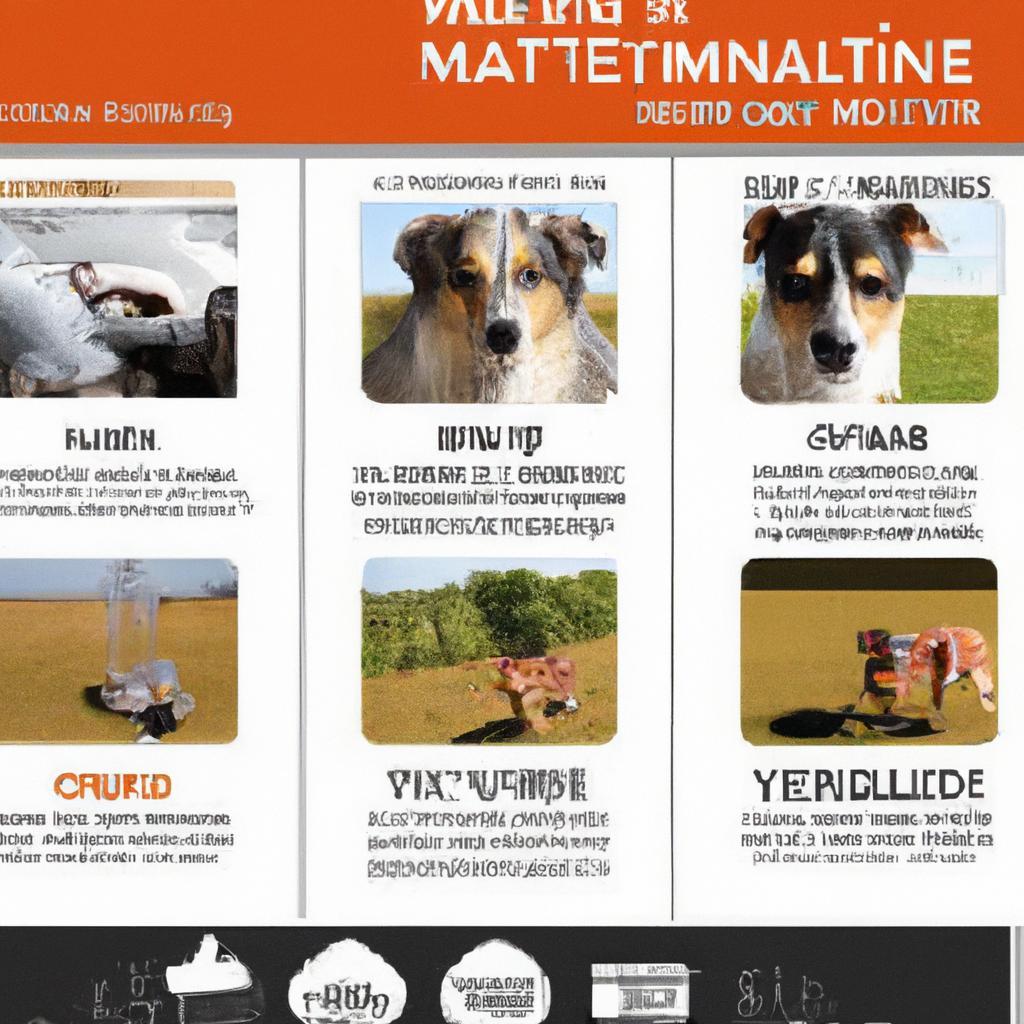Once, a devoted dog owner named Sarah decided to treat her furry friend, Max, to a special meal. She thought steak would be a delightful surprise. Little did she know, certain cuts of meat, especially those high in fat or seasoned with garlic and onion, could harm her beloved companion. After a trip to the vet, Sarah learned that not all meats are safe for dogs. Protect your pet’s health by avoiding harmful meats. Choose lean, unseasoned options instead, ensuring your dog enjoys a safe and happy meal every time.
Contents
- Understanding the Risks of Certain Meats for Canine Health
- Identifying Common Meats That Are Harmful to Dogs
- Nutritional Alternatives: Safe Meat Choices for Your Dog
- Best Practices for Feeding Meat to Ensure Canine Well-Being
- Q&A
Understanding the Risks of Certain Meats for Canine Health
When considering your dog’s diet, it’s crucial to recognize that not all meats are created equal. Certain types of meat can pose significant health risks to our canine companions. For instance, **raw or undercooked meats** can harbor harmful bacteria such as Salmonella and E. coli, which can lead to severe gastrointestinal issues. Cooking meat thoroughly not only enhances its digestibility but also eliminates these dangerous pathogens, ensuring a safer meal for your furry friend.
Another meat to be cautious about is **processed meats**, including hot dogs, sausages, and deli meats. These products often contain high levels of sodium, preservatives, and additives that can be detrimental to your dog’s health. Excessive salt can lead to dehydration and even more serious conditions like sodium ion poisoning. Moreover, the preservatives used in these meats, such as nitrates and nitrites, have been linked to various health concerns, making them a poor choice for your pet.
Additionally, certain types of fish, particularly those high in mercury, should be approached with caution. **Fish like swordfish, shark, and king mackerel** can accumulate toxic levels of mercury, which can adversely affect your dog’s nervous system and overall health. While fish can be a healthy protein source when prepared correctly, it’s essential to choose low-mercury options such as salmon or sardines and to ensure they are cooked properly to avoid any potential risks.
Lastly, it’s important to be aware of **meats that are high in fat**, such as fatty cuts of beef or pork. While dogs do require some fat in their diet, excessive fat can lead to obesity and pancreatitis, a painful and potentially life-threatening condition. Opting for leaner cuts of meat, such as chicken breast or turkey, can provide the necessary protein without the added risks associated with high-fat options. By being mindful of the types of meat you include in your dog’s diet, you can help promote their long-term health and well-being.
Identifying Common Meats That Are Harmful to Dogs
When it comes to our furry companions, not all meats are created equal. Certain types of meat can pose serious health risks to dogs, and it’s crucial for pet owners to be aware of these dangers. For instance, **raw or undercooked meats** can harbor harmful bacteria such as Salmonella and E. coli, which can lead to severe gastrointestinal issues. Cooking meat thoroughly is essential to eliminate these pathogens and protect your dog’s health.
Another meat that should be avoided is **pork**, particularly when it is raw or undercooked. This type of meat can contain a parasite known as Trichinella spiralis, which can cause trichinosis in dogs. Symptoms may include vomiting, diarrhea, and abdominal pain. Even cooked pork can be problematic if it is seasoned with ingredients like garlic or onion, both of which are toxic to dogs.
Additionally, **processed meats** such as bacon, sausage, and deli meats are often high in sodium and preservatives, which can lead to serious health issues like pancreatitis and obesity in dogs. The high-fat content in these meats can also be detrimental, especially for breeds prone to weight gain. It’s best to steer clear of these options and choose healthier alternatives.
Lastly, **certain game meats** like venison and rabbit can be risky if not sourced properly. These meats may carry parasites or diseases that can be transmitted to dogs. Always ensure that any game meat is sourced from reputable suppliers and is cooked adequately to eliminate potential health hazards. By being mindful of the types of meat you offer your dog, you can help ensure their well-being and longevity.
Nutritional Alternatives: Safe Meat Choices for Your Dog
When considering safe meat choices for your canine companion, it’s essential to explore alternatives that not only meet their nutritional needs but also promote their overall health. While some meats can pose risks, there are several options that are both safe and beneficial. **Chicken**, for instance, is a lean protein source that many dogs enjoy. It is easily digestible and can help maintain muscle mass while providing essential amino acids.
Another excellent choice is **turkey**, which is low in fat and high in protein. This meat is particularly beneficial for dogs with sensitivities to other protein sources. Additionally, turkey contains important nutrients like selenium and phosphorus, which support a healthy immune system and strong bones. Incorporating turkey into your dog’s diet can be a delicious way to ensure they receive the nourishment they need.
For those looking for red meat alternatives, **beef** can be a great option, provided it is lean and cooked thoroughly. It is rich in iron and zinc, both of which are crucial for maintaining energy levels and supporting a healthy coat. However, it’s important to avoid fatty cuts and processed beef products, as these can lead to obesity and other health issues in dogs.
Lastly, consider **lamb** as a nutritious alternative. This meat is often recommended for dogs with food allergies or sensitivities, as it is less likely to cause adverse reactions. Lamb is rich in essential fatty acids, which can help promote healthy skin and a shiny coat. When selecting meat for your dog, always prioritize high-quality sources and consult with your veterinarian to ensure that you are meeting their specific dietary requirements.
Best Practices for Feeding Meat to Ensure Canine Well-Being
Feeding your dog meat can be a rewarding experience, but it’s essential to ensure that the meat you choose contributes positively to their health. To promote optimal canine well-being, consider the following best practices when incorporating meat into your dog’s diet:
- Choose High-Quality Sources: Always opt for fresh, high-quality meat from reputable suppliers. Avoid processed meats that may contain additives, preservatives, or fillers that could harm your dog’s health.
- Balance with Other Nutrients: While meat is a vital protein source, it should not be the sole component of your dog’s diet. Incorporate a variety of fruits, vegetables, and grains to ensure a balanced intake of essential nutrients.
- Cook Thoroughly: Cooking meat properly is crucial to eliminate harmful bacteria and parasites. Ensure that all meat is cooked to the appropriate temperature to safeguard your dog’s health.
- Monitor Portion Sizes: Overfeeding meat can lead to obesity and other health issues. Pay attention to portion sizes based on your dog’s size, age, and activity level to maintain a healthy weight.
Additionally, it’s important to be aware of specific types of meat that may not be suitable for dogs. For example, certain meats like raw pork can carry the risk of parasites, while processed meats such as bacon and deli meats are often high in sodium and unhealthy fats. Always research and consult with a veterinarian to determine the best options for your furry friend.
- Avoid Fatty Cuts: While dogs need some fat in their diet, too much can lead to pancreatitis. Stick to lean cuts of meat to keep your dog healthy.
- Limit Bones: Cooked bones can splinter and pose choking hazards or cause internal injuries. Opt for raw bones that are safe for chewing, but always supervise your dog during mealtime.
- Watch for Allergies: Just like humans, dogs can have food allergies. Introduce new types of meat gradually and monitor for any adverse reactions.
By adhering to these guidelines, you can ensure that the meat you provide not only satisfies your dog’s taste buds but also supports their overall health. A well-rounded diet, combined with regular veterinary check-ups, will help your canine companion thrive. Remember, the goal is to create a nutritious and enjoyable feeding experience that enhances your dog’s quality of life.
Q&A
-
Is raw meat safe for dogs?
Raw meat can pose significant health risks to dogs, including exposure to harmful bacteria like Salmonella and E. coli. These pathogens can lead to severe gastrointestinal issues in both dogs and humans. It’s essential to consult with a veterinarian before considering a raw diet.
-
Can dogs eat pork?
Pork is not recommended for dogs, especially if it is undercooked or contains bones. Undercooked pork can harbor parasites like Trichinella, while cooked bones can splinter and cause choking or internal injuries. Always prioritize safer protein sources.
-
Is processed meat harmful to dogs?
Processed meats, such as bacon, sausage, and deli meats, often contain high levels of salt, preservatives, and additives that can be harmful to dogs. These ingredients can lead to obesity, pancreatitis, and other health issues. Opt for fresh, unprocessed meats instead.
-
Are there any meats that dogs should avoid entirely?
Yes, certain meats like beef and lamb can be problematic for some dogs, especially if they have allergies or sensitivities. Additionally, fatty cuts of meat can lead to pancreatitis. Always monitor your dog’s reaction to new foods and consult your vet for personalized advice.
while dogs thrive on a balanced diet, not all meats are suitable for them. Prioritizing their health means avoiding harmful options like raw pork or processed meats. Choose wisely to ensure your furry friend enjoys a long, healthy life.




